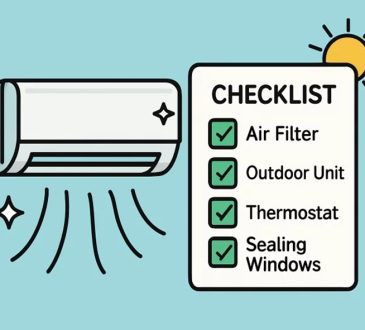
Water leaks can creep up unnoticed, creating a host of issues, from structural damage to skyrocketing water bills. Tackling these hidden problems early can save you time, money, and stress. If you’re unsure where to start or need professional help, reaching out to a trusted plumber in Dayton is a wise move. Meanwhile, here are six practical ways to uncover hidden water leaks in your home.
1. Monitor Your Water Meter
Start by checking your water meter for signs of leaks. Turn off all water sources in your home, including faucets and appliances like dishwashers and washing machines. Once everything is off, observe your water meter. If the needle moves or the digital reading changes, this could point to a hidden leak in your plumbing system. This simple test often acts as a reliable first step in identifying water usage issues.
2. Look for Water Stains and Discoloration
Water stains on walls, ceilings, and floors are telltale signs of hidden leaks. These stains may appear as yellowish spots or dark brown rings caused by moisture gathering in places it shouldn’t be. Be sure to check for these signs near plumbing lines or fixtures. Understanding the signs you need a plumber can make it easier to recognize when professional help is required to address these problems.
3. Inspect Your Water Bill
Keep an eye on your water bills each month. If you notice a sudden spike without a change in your water usage habits, it could indicate a hidden leak. Compare current bills with previous ones to spot any unexplained increases. This method is especially helpful for identifying leaks that might not be obvious otherwise.
4. Listen for Unusual Sounds
Unusual noises like dripping water or the faint sound of running water when none of your fixtures are in use often signal a leak. Investigate areas where leaks are common, such as under sinks, behind toilets, and around water heaters. If you’re unsure what to do or make assumptions based on hearsay, consider familiarizing yourself with common plumbing myths debunked by professionals. This ensures you avoid missteps while addressing the issue.
5. Check for Mold and Odors
Mold growth and persistent musty odors are giveaways that water is accumulating somewhere unseen. Focus on damp areas like basements, crawl spaces, and behind walls where leaks might occur. Even a small patch of mold could signal a larger hidden problem. Inspect these areas carefully to avoid further damage and maintain your home’s air quality.
6. Test Your Toilets and Faucets
Toilets and faucets are prime suspects for hidden leaks. For toilets, add a few drops of food coloring to the tank and wait 15 to 20 minutes without flushing. If the color shows up in the bowl, you’ve got a silent leak. For faucets, check beneath the sink for any damp spots or pooling water. Regularly inspecting and maintaining these fixtures can prevent small leaks from becoming oversized problems.
Conclusion
Uncovering hidden water leaks requires diligence, but it’s manageable with the right strategies. By monitoring your water meter, examining your bills, and looking for telltale stains or noises, you can take proactive steps to safeguard your home. Ultimately, staying alert to warning signs and acting fast to address leaks keeps your home safe and efficient. If you suspect a water leak but aren’t sure where to begin, consult a skilled professional to help you resolve the issue quickly and effectively.




